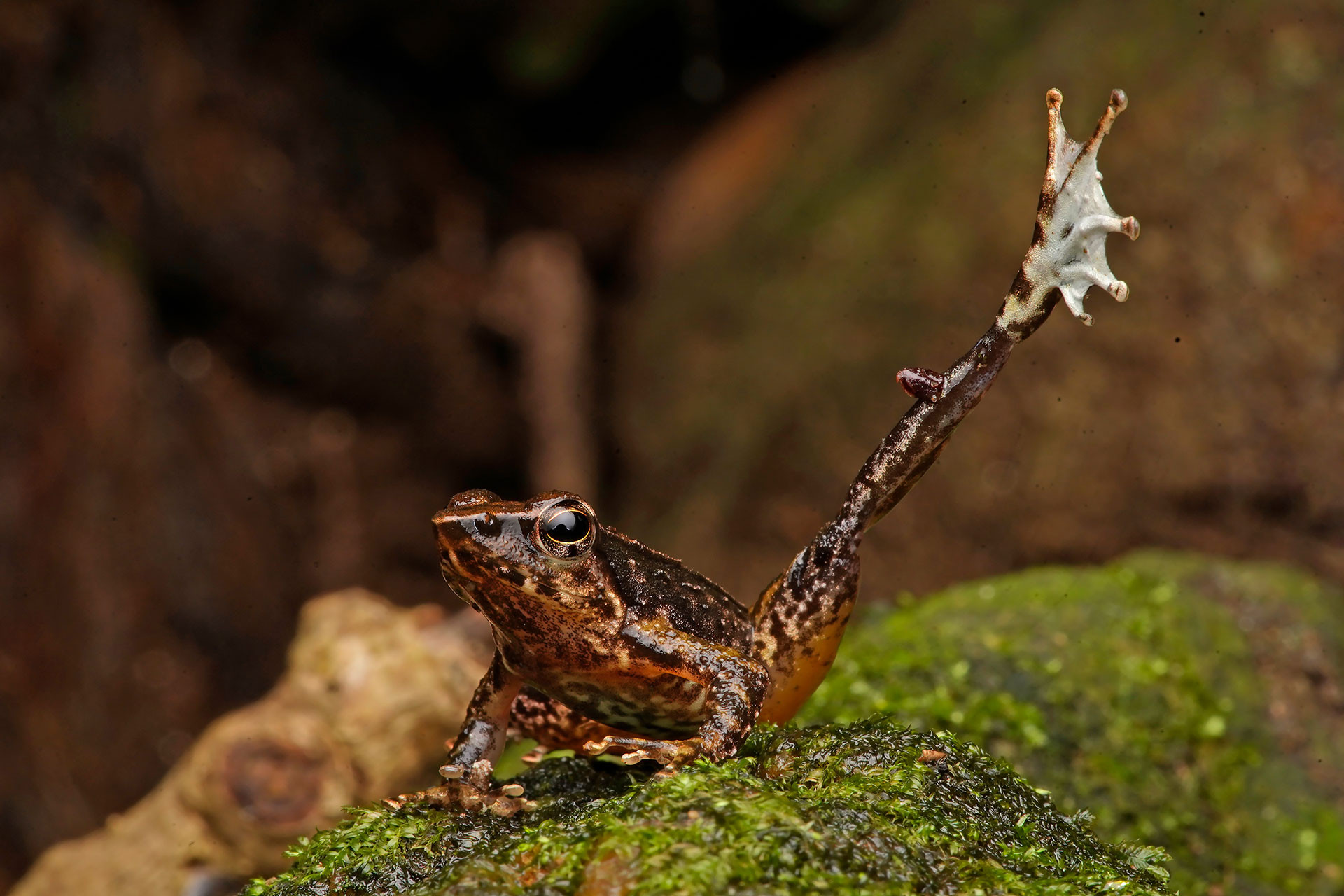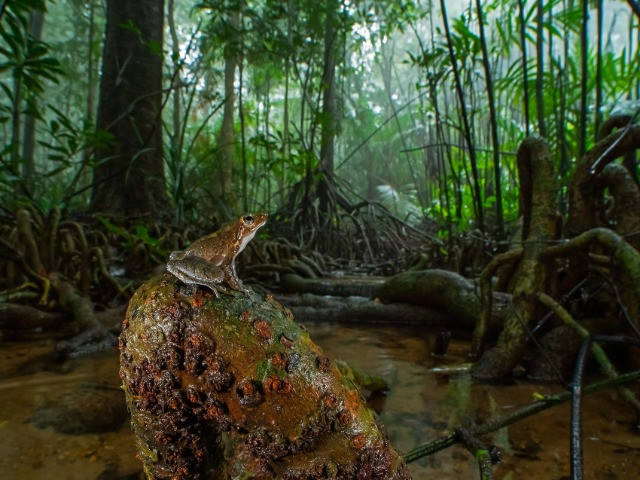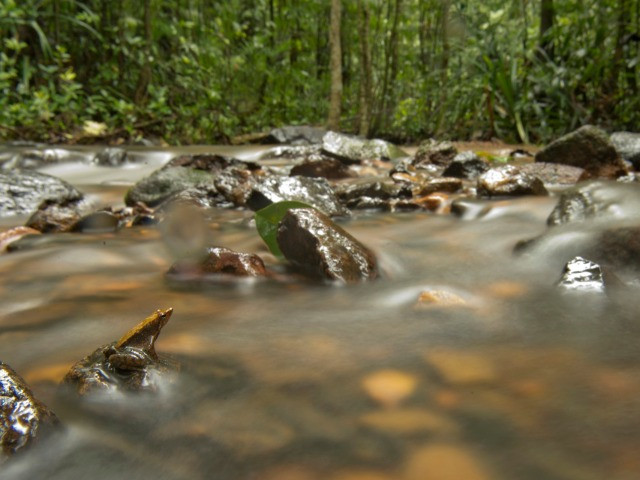When you think of frogs, you think of their loud croaks that cut through the silence of the night. Of enlarged vocal sacs and other curious morphological traits. Of how nimbly the tiny amphibians leap their way through streams. But, what about dance moves? In the wild streams of the Western Ghats resides a group of frogs known for their signature moves and aptly named dancing frogs. These endemic amphibians have distinct breeding behaviours that have made them the focus of numerous studies. But beyond their signature dancing moves, the frogs of this family are threatened by the decline of their fragile ecosystems, making it critical that we generate more awareness about them.
Dancing frogs are members of the Micrixalus genus, and there are about 24 frog species in this family. Their preferred habitats are shola grasslands, myristica swamps and evergreen forests within the Western Ghats, where they mainly reside near slow-moving perennial streams.
Typically, male frogs use their enlarged vocal sacs to call out to a potential mate during the breeding season. The call also acts as a warning signal, enabling the male to ward off competition and mark his territory. But when it comes to dancing frogs, the approach is quite different.
If you ever find yourself taking a stroll in the evergreen forests of the Western Ghats, pay close attention to the streams. You will discover these tiny frogs with pointed snouts holding up their heads. Their calls are a distinct ‘piligiri piligiri’ sound, but their proximity to flowing streams and waterfalls makes it difficult for the call to reach potential mates. Dancing frogs have come up with a unique solution for this problem. They rhythmically stretch their hind legs, displaying their webbed toes. This signature move is called ‘foot-flagging’ and serves the dual purpose of attracting a female while also sending out a warning signal to other male frogs in the area. If a rival male frog does enter the territory, the frogs announce the threat with a call that sounds like ‘kirk kirk’. Initially, foot-flagging is performed as a warning to the rival, then as a means to knock the competing male off his perch. They then continue foot-flagging to try and garner the attention of a potential mate.
Female frogs are found hiding beneath rocks and only approach the male when they are ready to mate. Once a female shows interest, the male frog mounts the female from behind by grasping her armpit with the help of its nuptial pad and thumb. Post amplexus, females deposit the eggs in a cavity dug in the streambed and cover it up with gravel to protect them from predators. Micrixalus tadpoles lead a fossorial life from eggs to late metamorphic stages. They feed and grow under the first layer of gravel, emerging as adult frogs.
Not much is known about the population status and ecological requirements of several of the dancing frog species. A quick scan of the IUCN Red List shows that only a few species are documented on the site, and the conservation status is not known for all of them. Among the listed threats, the conversion of habitats for agriculture is one of the most significant mentions. Dancing frogs are also impacted by human activities that alter the flow of wild streams in the forest. With very specific habitat needs, we must spend more time understanding these frogs and build more awareness about their ecosystems. Here are a few images that show the signature moves of the dancing frogs.
You may also like to read













.jpg)
